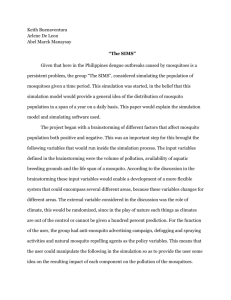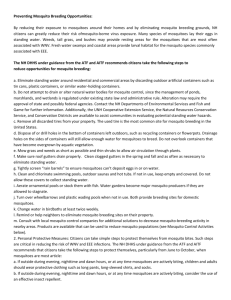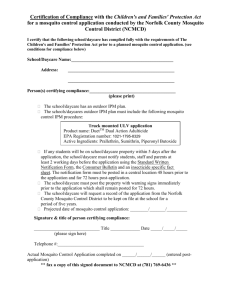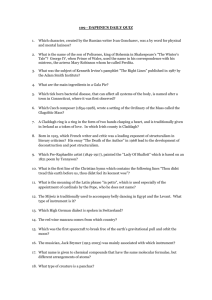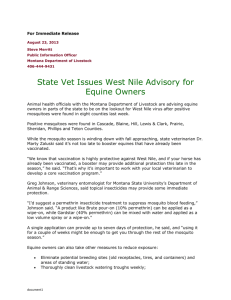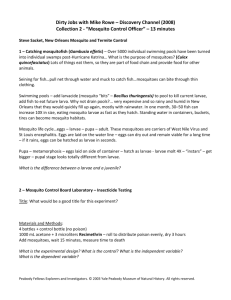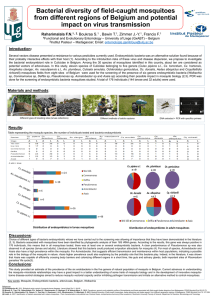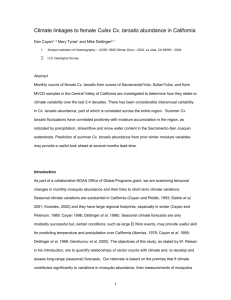Simulation_final_results
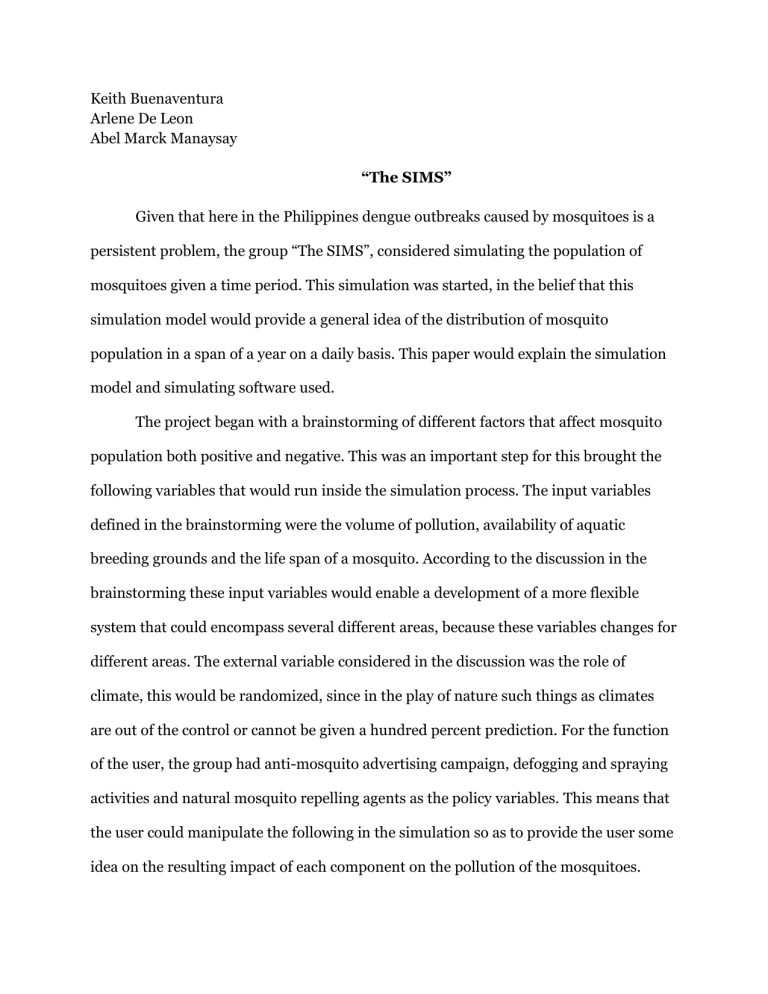
Keith Buenaventura
Arlene De Leon
Abel Marck Manaysay
“The SIMS”
Given that here in the Philippines dengue outbreaks caused by mosquitoes is a persistent problem, the group “The SIMS”, considered simulating the population of mosquitoes given a time period. This simulation was started, in the belief that this simulation model would provide a general idea of the distribution of mosquito population in a span of a year on a daily basis. This paper would explain the simulation model and simulating software used.
The project began with a brainstorming of different factors that affect mosquito population both positive and negative. This was an important step for this brought the following variables that would run inside the simulation process. The input variables defined in the brainstorming were the volume of pollution, availability of aquatic breeding grounds and the life span of a mosquito. According to the discussion in the brainstorming these input variables would enable a development of a more flexible system that could encompass several different areas, because these variables changes for different areas. The external variable considered in the discussion was the role of climate, this would be randomized, since in the play of nature such things as climates are out of the control or cannot be given a hundred percent prediction. For the function of the user, the group had anti-mosquito advertising campaign, defogging and spraying activities and natural mosquito repelling agents as the policy variables. This means that the user could manipulate the following in the simulation so as to provide the user some idea on the resulting impact of each component on the pollution of the mosquitoes.
Then inside the system the current mosquito population would be used in the next time step, which makes the system a closed system, with the mosquito population as the feedback variable. Lastly, the end goal of the system is to produce the mosquito population for each time step.
After finalizing the variables that will be running inside the simulation system the group created a Causal Loop Diagram which would provide an illustration of the effect of each variable to other variables inside the system. The group decided on whether a variable will have a possible or negative effect to another variable based on experience and logical reasoning. Figure 1 is the actual Causal Loop Diagram which explains the system.
Figure 1: Causal Loop Diagram
From this Causal Loop Diagram, an initial test was used using random numbers to represent the weight of each variable on the other variables. This step was the creation of a pulse process which is used by the group to have a more detailed validation and grasp of how the value of the variables would run inside the system for each time
step. Figure 2 is the actual pulse process used by the group and Table 1 provides the corresponding variable for each vector in the pulse process.
Figure 2: Pulse Process Model
Vector Variable Representation
A Mosquito Population
B
C
D
Volume of Pollution
Anti-mosquito ad campaign
Defogging and spraying activities
E
F
G
Availability of aquatic breeding grounds
Mosquito life span
Amount of rainfall
H Mosquito-repelling plants
Table 1: Pulse Process Vertex representation
Finally, after validating the pulse process the group proceeded in making the simulation model using the software poweSim. Again the model used in powerSim resembles the variable dependencies in the Causal Loop Diagram. Figure 3 is the actual model used by the group for the powerSim simulation.
Figure 3: PowerSim model
As stated above the value of the rainfall was randomized by using the Poisson model, which is said to be commonly used for climate occurrences. Then for other variables such as birth rate and death rate the groups simulated a sine wave model to resemble the effect of other variables to the specific variable. Then from this the group decided to simulate the reaction of the community using the policy and input variables such as mosquito repelling plants, anti mosquito campaign and available aquatic breeding grounds which is increased and decreased based on their depending variables. For example, an occurrence of rain would increase the amount of aquatic breeding ground. In the PowerSim this was handled through an IF statement. Finally using one of the features of powerSim the group validated the correlation of each variable by using checking the general positive and negative result of each variable to another variable using Table 2 which was from PowerSim.
In conclusion the group graphed the estimated population of mosquitoes for each time step as shown in Figure 4. From this graph the group observed that mosquito population tend to follow a pattern of an increase and decrease in its number. This only means that for a certain time step the population of the mosquito could either increase or decrease but still it is affected by the current flow in the graph. For example in timesteps 200-310 the group observed that there was a negative flow in the mosquito population. Lastly from this graph the group observed that the change in population of mosquitoes are not very huge, meaning that for a certain variable to have an effect on the population it must be done consistently and continuously.
Figure 5: PowerSim output
Table 2: Powersim Variable values for each timestep

